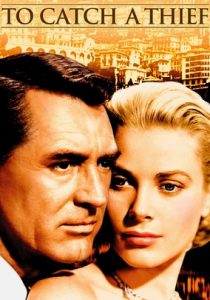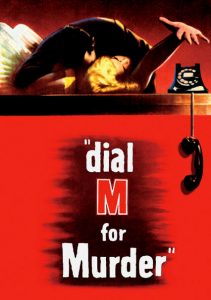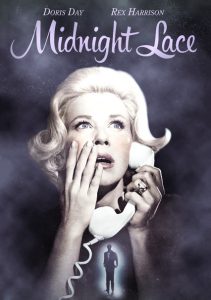To Catch A Thief-1955
Director Alfred Hitchcock
Starring Cary Grant, Grace Kelly
Top 250 Films #73
Scott’s Review #455
Reviewed July 24, 2016
Grade: A-
Cary Grant starred in five Alfred Hitchcock films in his day, and 1955’s To Catch A Thief is right smack in the middle of Hitchcock’s prime period of masterful pictures.
Grace Kelly (her third and final Hitchcock film) co-stars, making this film a marquee treat as both actors were top-notch in their heyday and had much chemistry in this film.
While not my all-time favorite of Hitchcock films, To Catch a Thief has mystery, a whodunit, and some of the most gorgeous cinematography of the French Riviera. The breathtaking surroundings are my favorite part of this film.
Grant plays John Robie, aka. “The Cat,” an infamous jewel thief who has now gone clean. He spends his days quietly atop the French Riviera growing grapes and flowers and keeping out of trouble.
When a new jewel thief begins to strike wealthy tourists, Robie is immediately under suspicion by the police. He is forced to prove his innocence by catching the real thief in the act, as the thief uses the same style of stealing as Robie once did.
Amid this drama, Robie meets the beautiful heiress Frances (Kelly) and her interfering mother, Jessie Stevens (Jessie Royce Landis), which leads to romance.
Although Grant could be old enough to be Kelly’s father, we immediately accept Robie and Frances as the perfect couple- she is sophisticated, stylish, and rich, and he equally has a bad-boy edge.
To Catch A Thief has a strong romantic element and a glamorous and wealthy tone. After all, the subject matter at hand- jewels- equates to lavish set decorations, women dripping in expensive jewelry, and a posh resort among the gorgeous French waters.
The supporting characters are interesting, too. A triangle emerges as Frances plays catty with a young girl, Danielle, eager for Robie’s affection. Danielle, much plainer looking than Frances, though no shrinking violet, holds her own in a match of wits with Frances as they bathe in the water one afternoon.
Frances’s mother, Jessie, provides tremendous comic relief as she attempts to bring Robie and Frances together. She is always searching for a handsome suitor for her daughter.
Finally, insurance man H.H. Hughson also contributes to the comic relief by begrudgingly providing Robie with a list of wealthy visitors with jewels.
In their playfully awkward lunch- delicious quiche is the meal of the day- at Robie’s place, Robie proves how Hughson himself is a thief of sorts to accomplish what he needs to get from Hughson.
Despite all of the positive notes, something about To Catch A Thief prevents it from being among my all-time favorite Hitchcock films. Perhaps it is because I never doubted Robie’s innocence, and if dissected, the caper is a bit silly.
I get the sense that the audience is supposed to question whether Robie is truly reformed or playing a game and is back to his dirty deeds, but I wasn’t fooled.
This is a minor gripe, but To Catch A Thief is a fantastic film.
The way the film is shot is almost like being on the French Riviera. Countless coastal shots of the skyline will amaze the viewer with breathtaking awe of how gorgeous the French country is and how romantic and wonderful it is.
This is my favorite part of To Catch A Thief.
The visuals of the film rival the story as the costumes created by costume designer and Hitchcock mainstay, Edith Head, are simply lovely. And who can forget the costume ball near the conclusion?
Though the story might be the weakest and lightest element of the story, who cares? The visuals more than make up for any of that, as To Catch A Thief (1955) will please loyal fans of Hitchcock’s vast catalog.
Oscar Nominations: 1 win-Best Art Direction, Color, Best Cinematography, Color (won), Best Costume Design, Color


